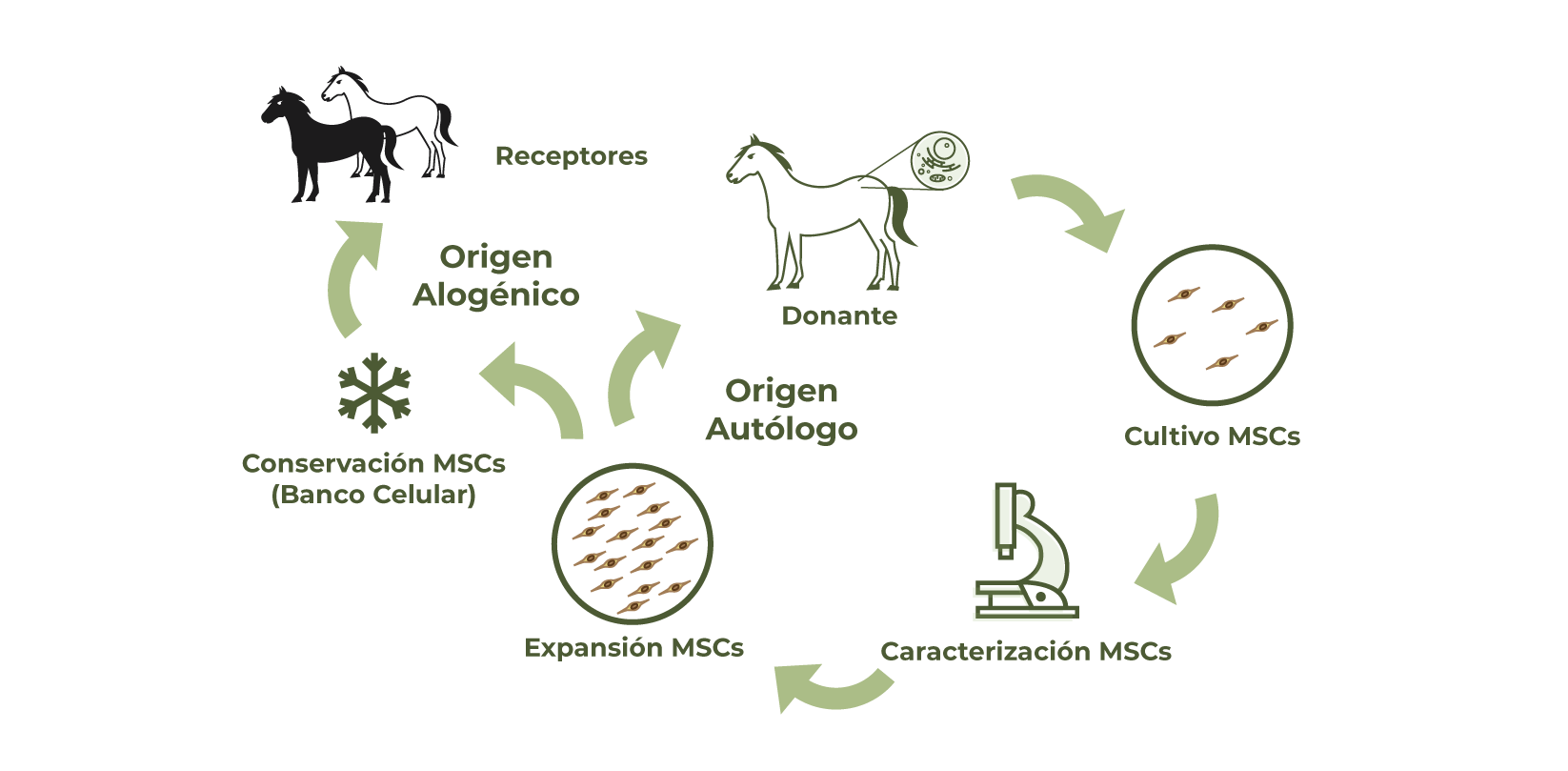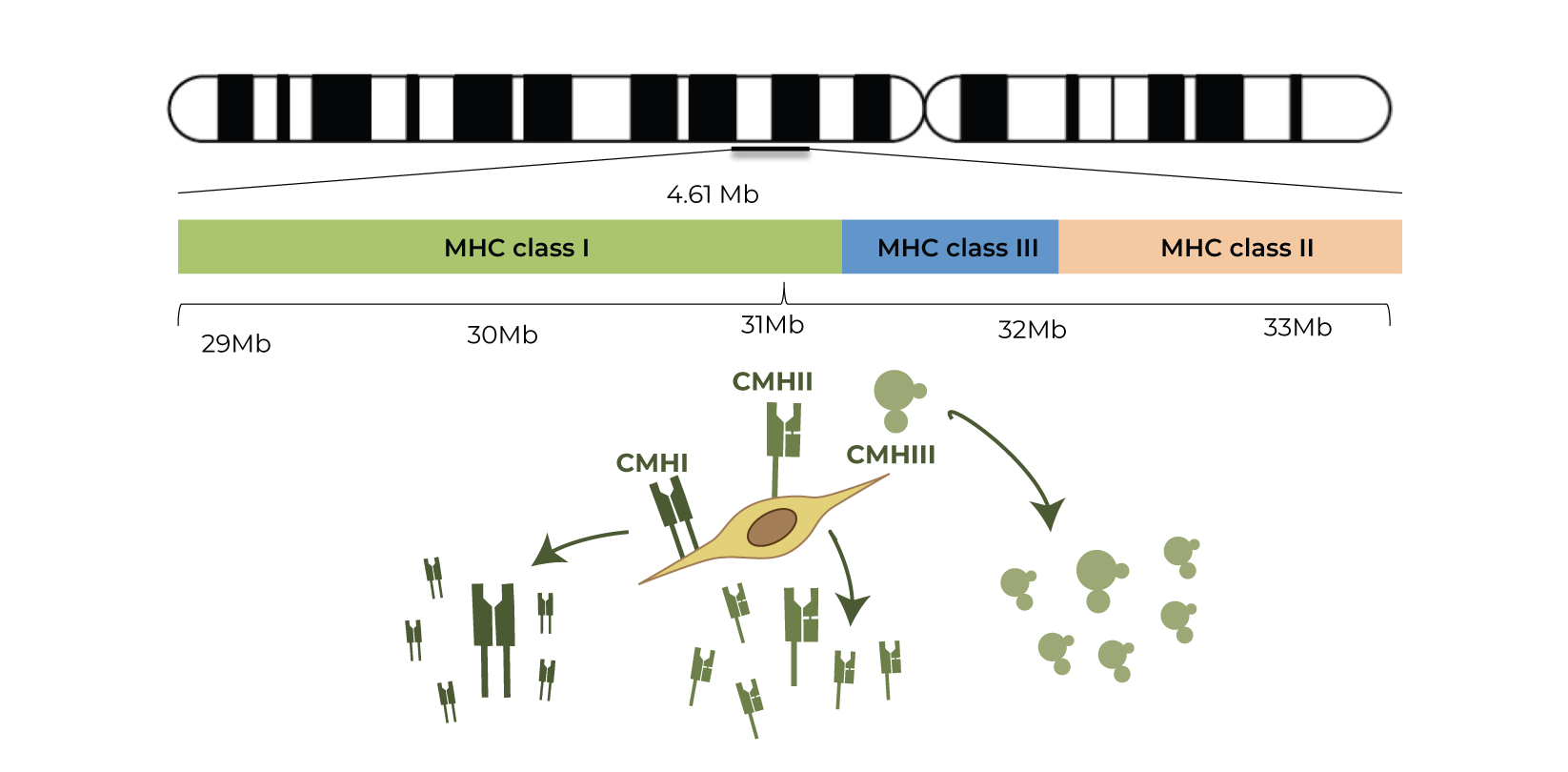Treatment
Stem cells can be used for advanced therapies to enhance tissue or organ repair by harnessing the body’s own mechanisms. Among the different types of stem cells, mesenchymal stem cells (MSCs) are one of the most prominent types for therapy. These are adult multipotent stem cells that can be found in a wide variety of tissues in the horse, including bone marrow, adipose tissue, muscle, periosteum and peripheral blood, among many others.
MSCs exert their therapeutic function through several mechanisms: on the one hand, they can integrate into the tissue to replace damaged cells and produce extracellular matrix. On the other hand, they also have a trophic effect mediated by the secretion of a variety of mediators to limit cell damage and promote cell proliferation, as well as an anti-fibrotic effect that can improve the quality of the repaired tissue. Nevertheless, MSC main therapeutic mechanism is through their immunomodulatory and anti-inflammatory capacities. Such properties are making them particularly relevant in current research to develop new therapies. Using these mechanisms, the use of MSCs in regenerative medicine aims to restore or re-establish the normal structure and function of tissues lost as a result of disease, injury or age-related degeneration.




